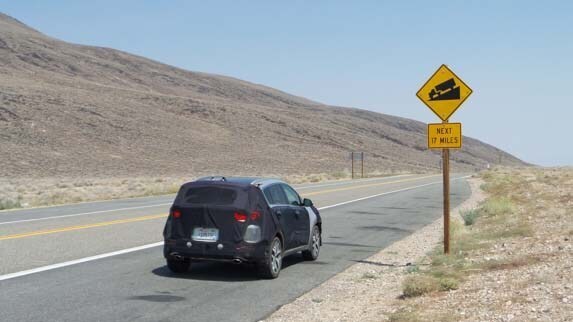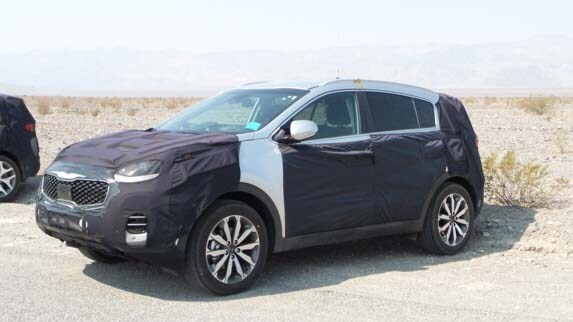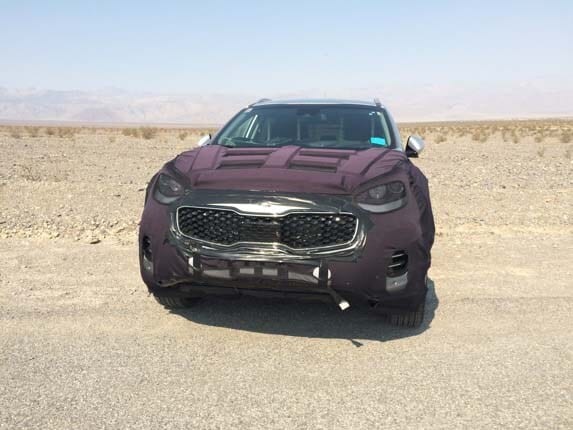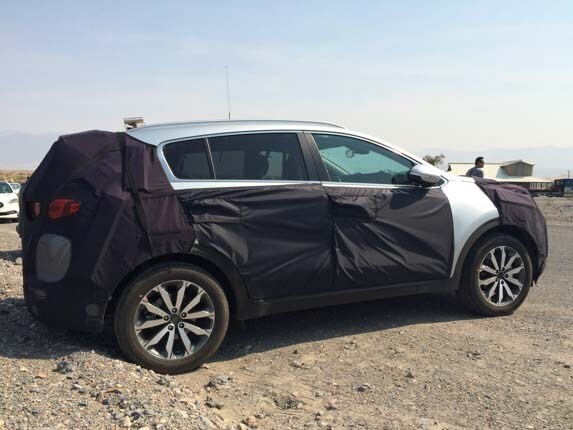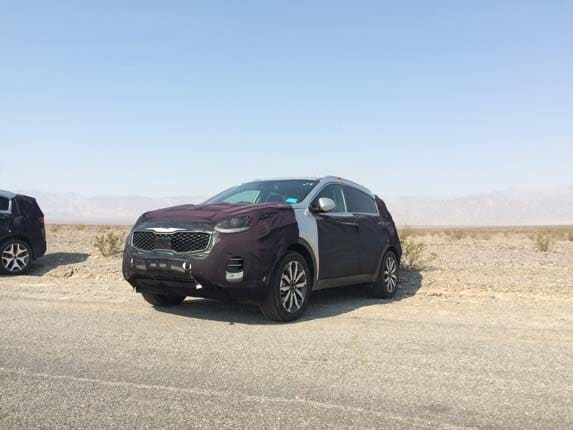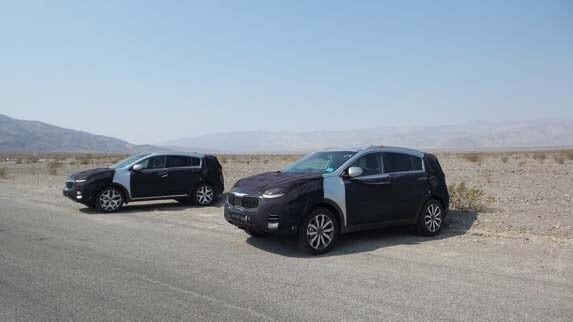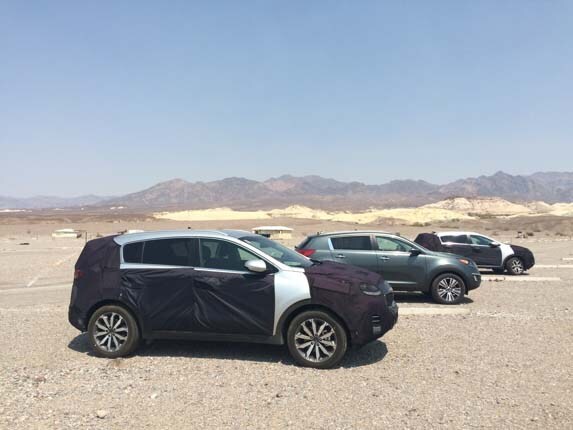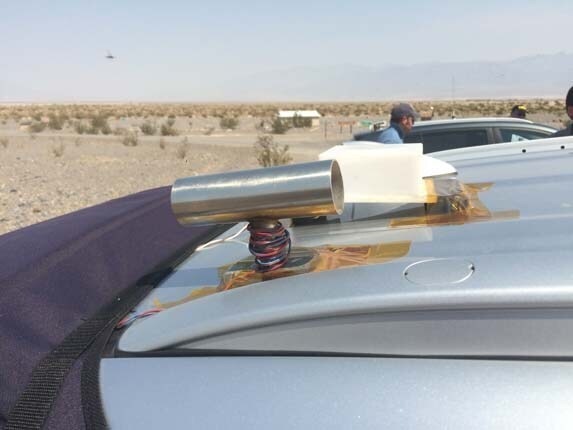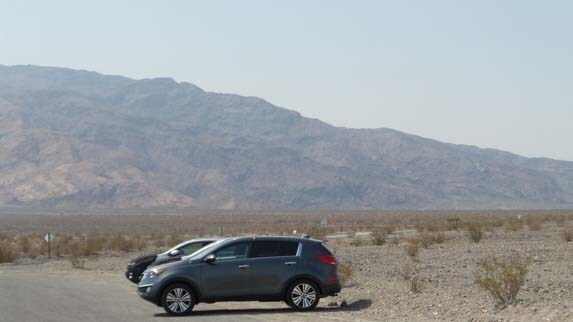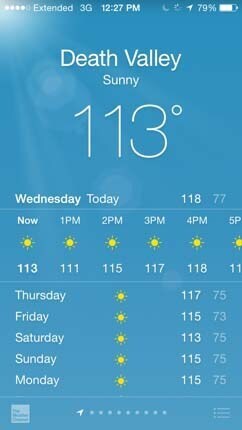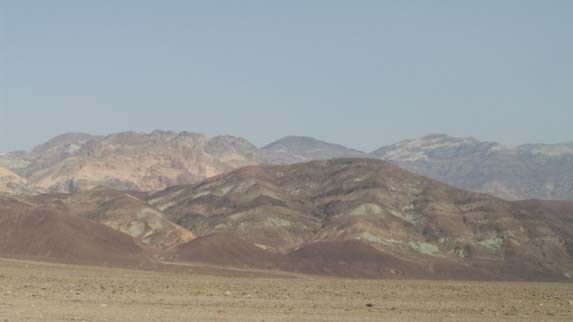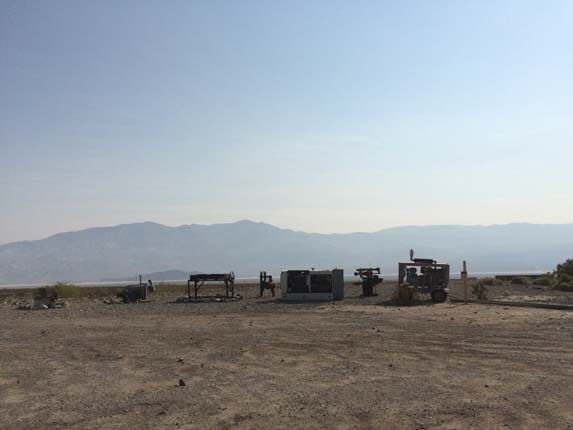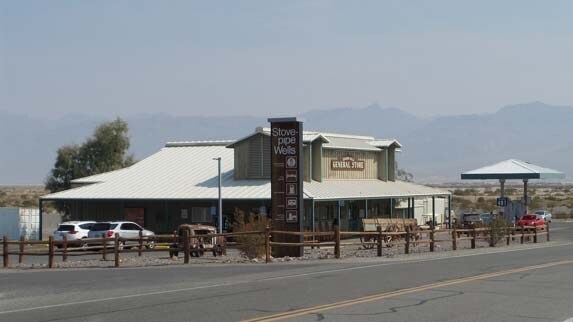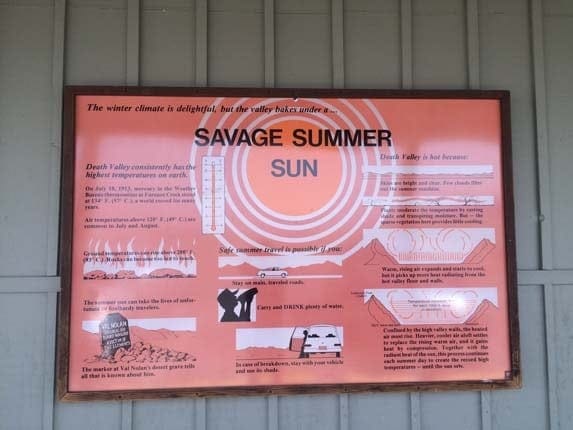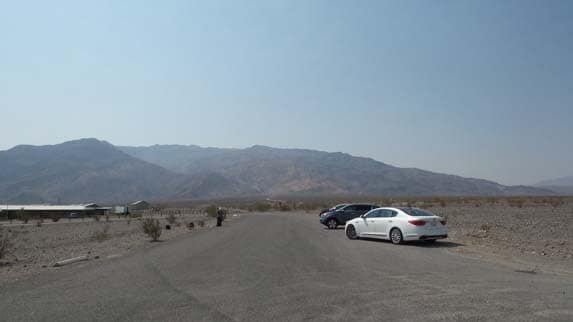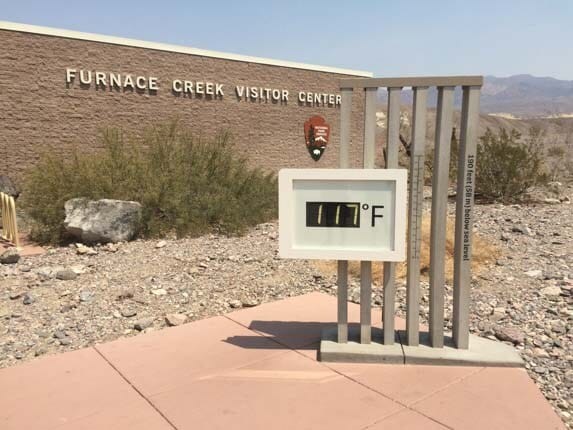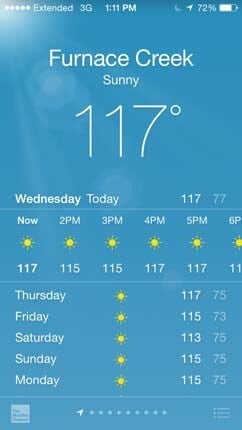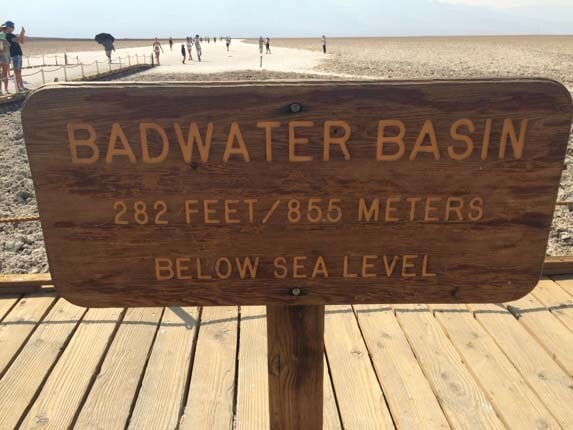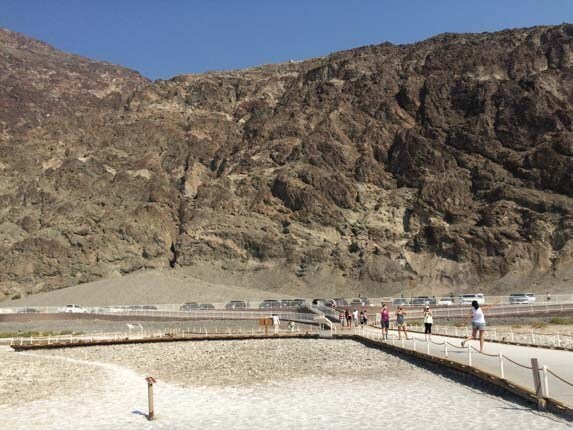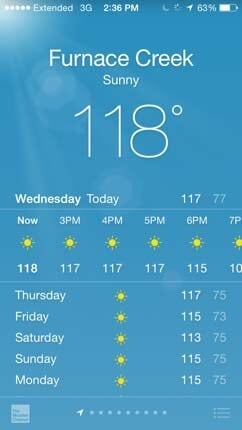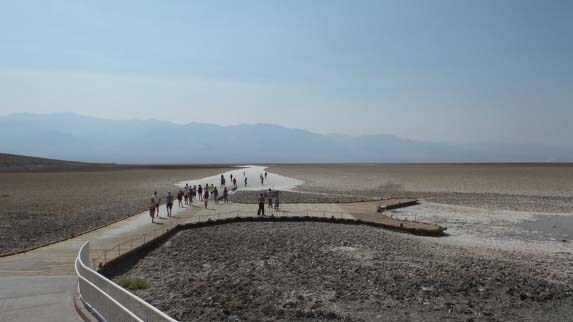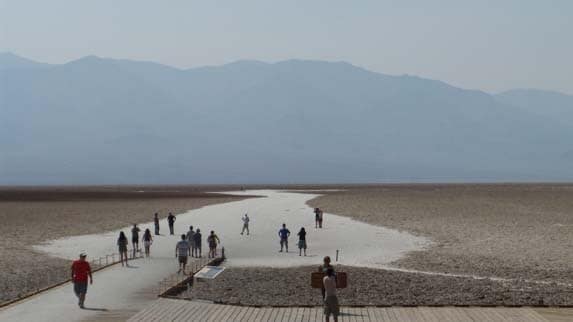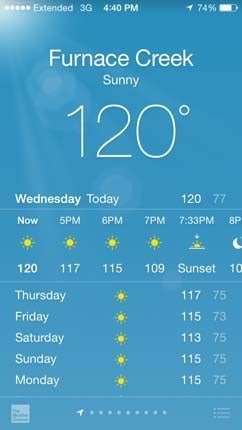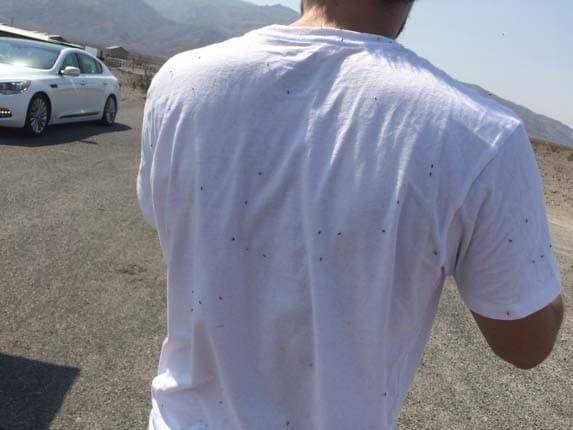For most people, a 115-degree day would be a bad one. But for a certain breed of automotive engineer, it’s ideal. In fact, it’s pretty much a requirement. These folks aren’t crazy, and while few rational people would voluntarily subject themselves or their cars to such conditions, it’s all for the greater good. This is hot-weather testing, and Kia gave us a rare, behind-the-scenes look at what it entails.
Why do this?
Before cars are sold to the public they must meet a bevy of requirements, from federal safety mandates to an automaker’s internal standards for noise abatement. Among the most vital factors are how a car’s powertrain and HVAC (heating, ventilation and air conditioning) system deal with extreme ambient temperatures. We’re talking a span of minus 20 degrees Fahrenheit to in excess of 120 degrees. Of course, not every new model will have to endure such temperatures. But because some will, they all must. Every automaker performs some type of weather testing, but each has their own idiosyncrasies.
For the hot-weather component of these tests, we joined Kia in one of the hottest places on Earth, in one of the hottest times of year: Death Valley in August. This desert region in Eastern California is a paradox in both its beauty and geography. Where some see only parched hills and shrubs, a closer inspection reveals a tapestry of life that ranges from tiny, endangered wildflowers to resplendent birds. On the geographic side, the region’s elevation ranges from the lowest point in North America — Badwater Basin at 282 feet below sea level — to over 11,000 feet at Telescope Peak.
These factors make it ideal for not only testing pre-production cars in treacherous heat, but also understanding how they deal with steep grades and scorching sun exposure. The region also is just a 3-4 hour drive from the immense California City proving grounds that Kia shares with corporate parent Hyundai, where cars can undergo even more tests in a controlled environment.
Putting Kias to the test
We took part in a trio of key tests over hundreds of miles in the Death Valley region: the heat soak hill climb, stop-and-go testing, and the slow-speed test. The vehicles being tested were 2017 Kia Sportage small SUVs in camouflaged, pre-production form. At some point, each of the tests felt like torture for the vehicles and us, but we’re happy to report that neither car nor writer fainted. Also: thank heaven for ventilated seats.
It’s already 104 degrees when we reach Stovepipe Wells around 10:30 a.m. Unfortunately, like a snarky answer to a snarky question — "Hot enough for ya?" — it’s not. Not for our purposes, anyway. Our two hosts, John Luyster and Ron Murray, both Senior Forward Model Engineers with Kia, are waiting for the interiors to reach about 122 degrees.
And that’s where the "soak" comes in. It means leaving these vehicles to bake in the sun with windows closed until that internal temperature is reached. If it were that "ideal" 115 degrees outside, the soak could be shorter. As it happens, we have to wait about an hour as the temperature climbs past the 107 mark. It feels even far hotter. And yet, the heat isn’t what’s most bothersome. The bugs are worse. Apparently the infestation has been particularly bad this year. I begin to wonder if sunscreen is like liquid sugar to these things. Finally, the magic number is attained and we’re ready to roll.
Rigid regimen
Precision is key to these tests, and even the way to enter the vehicle is specified. Passengers on one side must get in and quickly and close the door before those on the other side, lest we squander our carefully built-up heat like a downed soufflé. Once inside, two things hit you: the heat and — literally — wires. These Kia pre-production Sportages are festooned with over 70 sensors measuring dozens of variables, from oil and radiator temperature to how the car’s ECU — its digital brain — is behaving.
Heat soak done, we begin the hill climb, a 17-mile drive in which we gain 5,000 feet in elevation. Like some sort of twisted take on the movie "Speed," we must keep the vehicle at a steady 60 mph without using cruise control. Using cruise control at such a grade would cause too much accelerator fluctuation and mar the test results, Murray says. As with the other tests we’ll perform, the Kia’s climate setting will be put on max cold and the recirculation feature will be on. If you want a car to get as cool as possible in the shortest time, this is usually the way to go. It’s easier for the system to further cool the already-cooled air in the cabin than to draw in hotter air from outside and then cool that.
Thankfully, the vehicle passes with flying colors. We ascend into Towne Pass without issue, and by the time we arrive we’re even nice and cool from a properly functioning A/C system. "This car is doing great," Murray says as he jots notes and monitors the test instruments. At this stage in the game, Murray says his team are among the last line of quality checkers before the vehicle goes into production and then for sale. If there are any final issues, it’s their job to flag them.
Stop-and-go testing
Our next test involves just what its name implies, and is meant to mimic driving a car in extreme stop-and-go conditions. We spend a half hour going in loops in a closed-off parking lot, driving for two minutes and then idling for an equal amount. The twist is that we’re in Furnace Creek, which holds the record for the world’s highest-recorded temperature: 134 degrees. When we arrive, it’s 117 and rising.
The test evaluates how a car will perform when you’re at a stop light and want cold air. In such a case the vehicle works harder because it doesn’t have the benefit of forward momentum and thus airflow going over the A/C lines to help cool the air. Instead, the fan has to create that airflow on its own. After another heat soak to get the interiors beyond toasty, we start our circuit. At each stop, Murray, our onboard engineer, takes objective readings with instruments and subjective ones from myself and two other automotive writers to determine our comfort level. Slowly but surely over that half hour we reach a comfortable level — and gain an eye-opening understanding of what a difference factors such as sun intrusion can make and what it takes for a vehicle to maintain cabin comfort.
Slow-speed test
This last test is the hottest, and the hardest. The location name alone sounds ominous: Badwater. We arrive at 3 p.m., and it’s nearing 125 degrees. That’s hot, but still a few digits below what Murray’s experienced. "It’s a good test bed," he says casually. We again let the vehicles soak for an hour in the sun. I use the time to explore the salt flats and marvel that, if you dig a shallow hole, you’ll find water. Don’t drink it, though. It’s salty — which puts the "Bad" in "Badwater." I also oblige to take family photos to vacationing Europeans. Don’t ask me why, but they just love it here. It’s like the Disneyland of the Desert.
An hour later, the vehicles are soaked in heat and our group is soaked in sweat. Upon entry, we measure the cabin temperature at over 132 degrees. For several miles we travel at 25 mph to experience how the car copes with trying to cool the interior from extreme heat without the benefit of moving very quickly. The initial temperature drop is very noticeable, but from there it takes roughly half an hour for most of us to become comfortable. When the test is over and we are able to speed up, the cooling becomes even more pronounced, proving what a difference momentum makes when cooling a vehicle.
The takeaway
It only takes a couple of days in the desert to appreciate how hard a vehicle’s HVAC system works to keep its occupants comfortable — and how hard those behind the scenes building and testing the car work to ensure it’s all possible. And yet the car does all this in the background while the rest of its components work in harmony to keep us moving. Most reassuring is the fact that these cars are capable of performing under such conditions (and we’ve barely touched on the cold-weather testing they must endure; but that’s for another story). Like a Wolf range used only occasionally to boil water or a MacBook Pro that merely does Facebook duty, the truth is the modern car can do much more than what’s usually asked of it. Meanwhile, constant competition means cars are always improving. And that’s a good thing. Because as we found with these Kias, it provides confidence that when the heat is truly on, these cars will keep their cool.
POPULAR AT KBB.COM
